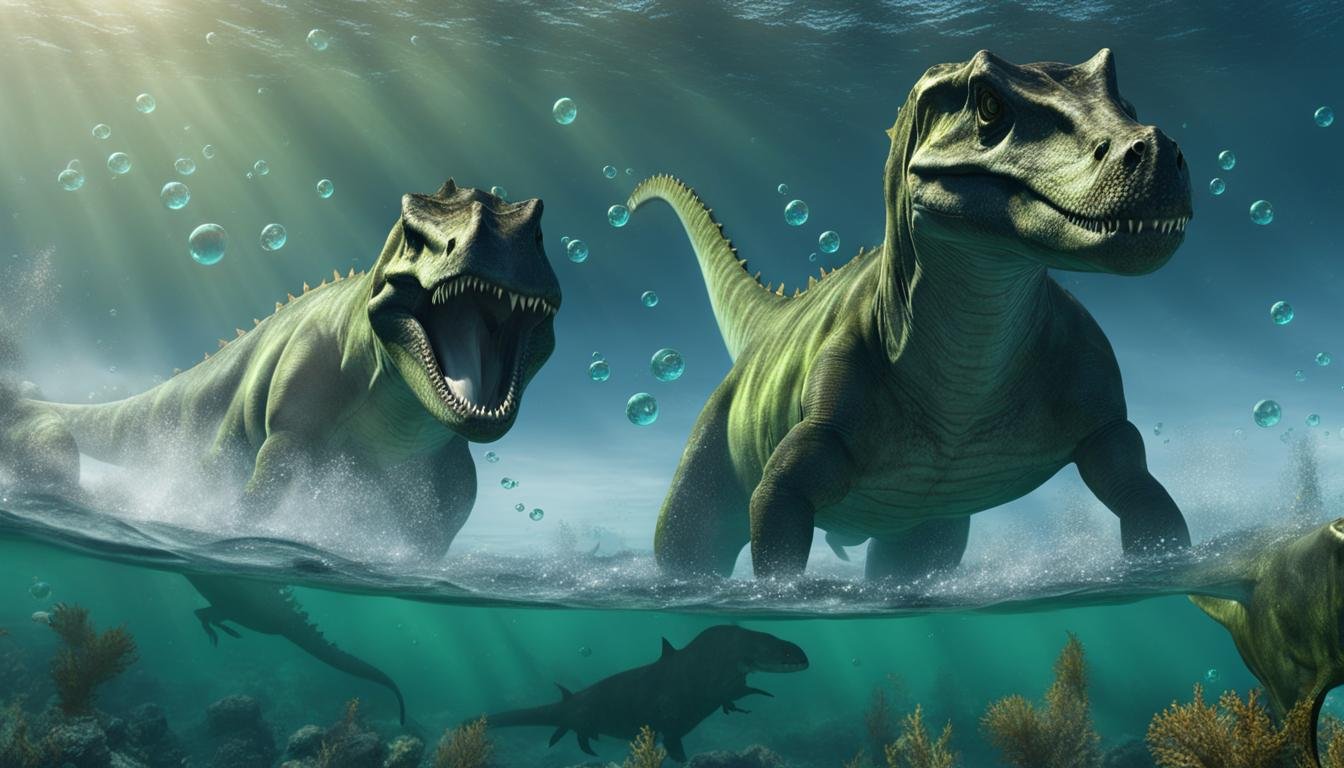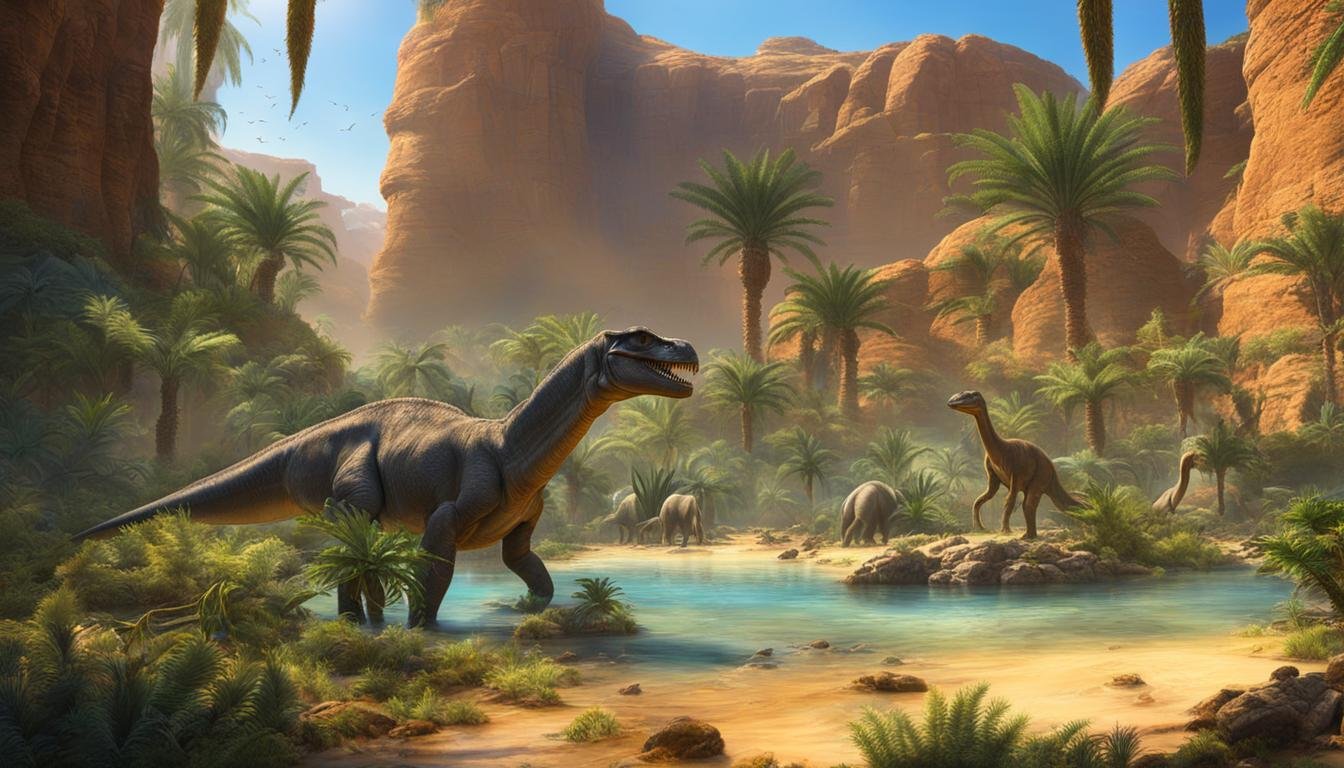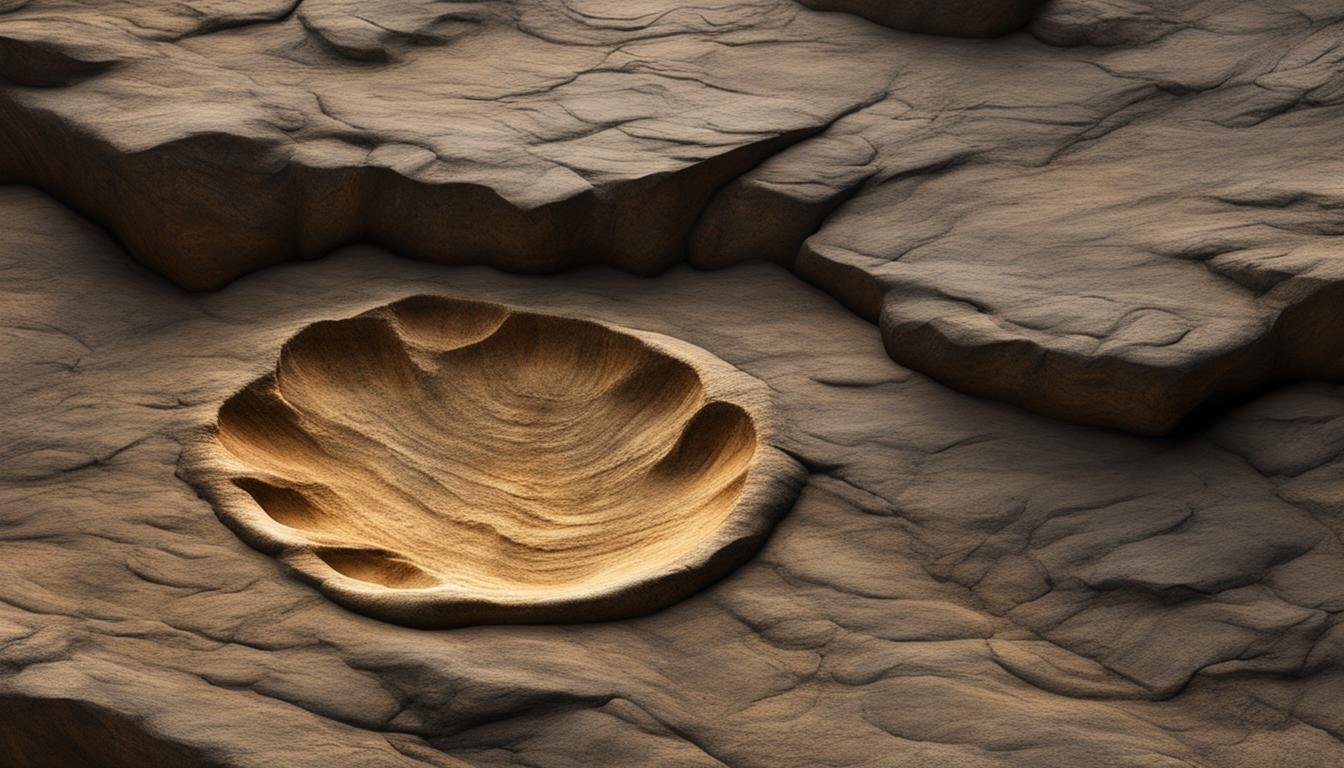Welcome to our exciting exploration of the geological features that shaped the habitats of dinosaurs! By delving into the fascinating world of dinosaur fossils and paleontological evidence, we can unlock the secrets of prehistoric landscapes and gain a deeper understanding of the ancient environments that these magnificent creatures once called home.
From the towering geological formations to the hidden wonders beneath the Earth’s surface, we will uncover the remarkable stories embedded within these ancient landscapes. Join us as we embark on a captivating journey through time to discover the wonders that awaited dinosaurs in their prime.
| Main Point | Description |
|---|---|
| Importance of Geological Features | Geological formations are vital in reconstructing dinosaur habitats and ancient environmental conditions. |
| Morrison Formation’s Richness | The Morrison Formation is renowned as a rich repository of diverse dinosaur species. |
| Morrison Ecosystem Characteristics | This ecosystem was characterized by lush forests, multiple rivers, and periods of drought, shaping the life within it. |
| Plant Diversity in Morrison Formation | A wide range of plant life in the Morrison Formation provided ample food sources for herbivorous dinosaurs. |
| Abundant Life in Morrison Formation | The Morrison Formation was teeming with not only dinosaurs but also a variety of other prehistoric animals. |
The Morrison Formation: A Dinosaur Haven
The Late Jurassic Period is renowned for its rich deposits of dinosaur fossils, and one of the most significant rock formations from this time is the Morrison Formation. Stretching across the Western United States, this formation is a treasure trove of dinosaur remains, providing valuable insights into the ancient past.
The Morrison Formation gets its name from the town of Morrison, Colorado, where it was first studied. Dating back around 156 to 146 million years ago, this rock unit is a window into the world of dinosaurs that roamed the Earth during the Late Jurassic period. It is particularly famous for its diverse assemblage of dinosaur species, including the iconic Camarasaurus, Apatosaurus, Stegosaurus, and Allosaurus.
Explorations within the Morrison Formation have yielded numerous remarkable discoveries. From the massive long-necked sauropods to the fearsome carnivorous theropods, the fossils found in this formation have allowed paleontologists to paint a vivid picture of the ancient ecosystems that once thrived millions of years ago. The discovery of complete skeletons, trackways, and other fossilized remains has provided scientists with invaluable data to better understand the diversity and ecology of dinosaurs during the Late Jurassic period.
| Dinosaur Species | Characteristics |
|---|---|
| Camarasaurus | Long-necked herbivore |
| Apatosaurus | Massive long-necked herbivore |
| Stegosaurus | Plated herbivore with tail spikes |
| Allosaurus | Carnivorous predator |
The Morrison Formation continues to be a source of fascination for paleontologists and dinosaur enthusiasts alike. Its unique geological features and the abundance of dinosaur fossils it holds provide an unparalleled opportunity to study the ancient past and unlock the mysteries surrounding these magnificent creatures.
The Morrison Ecosystem: Climate & Geography
During the Late Jurassic period, the Morrison ecosystem thrived in a climate that was warmer and more humid than it is today. This ancient environment was characterized by lush forests, abundant rivers, and occasional periods of drought. By studying the geological features of the Morrison Formation and analyzing oxygen isotopes in fossils, scientists have gained valuable insights into the climate and geography of this prehistoric ecosystem.
The landscape of the Morrison ecosystem was dominated by dense forests and shrublands, providing a lush habitat for a diverse range of plants and animals. Fossil records reveal the presence of ferns, cycads, ginkos, horsetails, and towering conifer trees. These ancient conifers, some reaching the size of today’s tallest redwoods, played a vital role in shaping the ecosystem and providing food and shelter for the dinosaurs that roamed the area.
Rivers were a prominent feature of the Morrison ecosystem, with multiple large water bodies cutting through the region. The presence of fluvial deposits in the geological record indicates the flow of water and the importance of rivers in shaping the landscape. However, this ecosystem was not without its challenges. Fossil evidence suggests that the Morrison ecosystem experienced at least three severe droughts, followed by localized flooding events when the rains returned. These fluctuations in climate influenced the distribution of plants and animals, and likely affected the behavior and survival of the dinosaurs in the ecosystem.
Droughts in the Morrison Ecosystem
“The Morrison ecosystem experienced at least three severe droughts, as indicated by fossil evidence. These periods of aridity would have posed challenges for the plants and animals that inhabited the region, reshaping the dynamics of the ecosystem.” – Dr. Sarah Davis, Paleontologist
| Climate | Geography | |
|---|---|---|
| Late Jurassic Period | Warmer and more humid than today | Lush forests, shrublands, and rivers |
| Droughts | At least three severe droughts | Localized flooding events followed |
The climate and geography of the Morrison ecosystem provide valuable context for understanding the lives of dinosaurs in this ancient environment. By studying the fossil record and analyzing the geological formations, scientists continue to uncover fascinating details about the Morrison ecosystem and the diverse range of plants and animals that thrived during the Late Jurassic period.
Morrison Plants: A Lush Forest
The Morrison ecosystem was a thriving and diverse landscape, characterized by a lush forest filled with an array of plant life. From towering conifer trees to delicate ferns, the vegetation in the Morrison Formation was abundant and provided a rich food source for the dinosaurs that roamed the area.
The plants in the Morrison ecosystem included a variety of species such as cycads, ginkos, horsetails, and ferns. These plants played a vital role in shaping the ancient environment, creating a vibrant and verdant habitat for both herbivorous and carnivorous dinosaurs.
One of the most notable plant groups in the Morrison Formation were the conifer trees, which could reach impressive heights comparable to today’s tallest redwoods. These towering giants cast a shadow over the forest floor, providing shade and shelter for smaller plants and animals.
The diverse plant life in the Morrison ecosystem not only contributed to the overall biodiversity of the area but also played a crucial role in the intricate food web of the ancient environment. The abundance of plants supported a thriving herbivore population, which in turn sustained the carnivorous dinosaurs that preyed upon them.
The Morrison Plants at a Glance
| Plant Species | Description |
|---|---|
| Ferns | Diverse group of non-flowering plants with feathery leaves |
| Cycads | Palm-like plants with large, compound leaves |
| Ginkos | Unique deciduous trees with fan-shaped leaves |
| Horsetails | Primitive plants with jointed stems and spore-producing cones |
| Conifer trees | Tall, cone-bearing trees, some reaching heights similar to today’s redwoods |

“The vegetation in the Morrison Formation provides valuable insights into the ancient ecosystem. The presence of such a diverse range of plant life indicates a fertile environment that was able to support a wide variety of dinosaur species.” – Dr. Elizabeth Paleontologist
Morrison Animals: A Dinosaur Paradise
The Morrison Formation, known for its abundant dinosaur fossils, was a true paradise for prehistoric creatures. This ecosystem was teeming with a diverse range of animals, including sauropods, theropods, ornithischians, crocodilians, and turtles.
The sauropods were the largest dinosaurs in the Morrison Formation. These gentle giants, such as Apatosaurus and Diplodocus, roamed the lush landscape, using their long necks to reach high into the trees for food. These herbivorous giants played a crucial role in shaping the ecosystem by shaping the vegetation and creating pathways for other animals.
Alongside the sauropods, there were also theropods, the carnivorous dinosaurs. Allosaurus, one of the most famous predators of the Morrison Formation, hunted smaller dinosaurs and played a crucial role in maintaining the balance of the ecosystem.
The Morrison Formation was a true dinosaur paradise, a place where herbivorous giants like Apatosaurus grazed peacefully while Allosaurus prowled the land in search of its next meal.
In addition to the dinosaurs, the Morrison ecosystem was home to a variety of other reptiles. Crocodilians, similar to their modern-day counterparts, lurked in the rivers and lakes, while turtles basked in the sun on the riverbanks. These reptiles added to the overall diversity of the ecosystem and played their own unique roles in the ancient food web.

Morrison Animals Table:
| Dinosaur | Category |
|---|---|
| Sauropods | Herbivores |
| Apatosaurus | Herbivore |
| Diplodocus | Herbivore |
| Theropods | Carnivores |
| Allosaurus | Carnivore |
| Ornithischians | Herbivores |
| Stegosaurus | Herbivore |
| Camptosaurus | Herbivore |
| Crocodilians | Carnivores |
| Turtles | Herbivores |
Evidence of Ancient Environments: Fossil Tracks
Fossil tracks are invaluable pieces of evidence that provide insights into ancient environments. These tracks, preserved in sedimentary rocks, offer a glimpse into the behavior and movement patterns of prehistoric animals. By studying fossil tracks, paleontologists can reconstruct past landscapes and understand the ecological dynamics of different environments.
Fluvial deposits, formed by rivers and streams, are common locations for fossil track preservation. These sedimentary rocks capture the footprints and trails left behind by dinosaurs and other animals as they moved along the water’s edge or crossed the river. Lacustrine sediments, found in lakes, also preserve tracks, especially those made by animals walking or running along the lake shore.
Tracks found in marine environments showcase the interactions between dinosaurs and coastal habitats. These tracks can be found in sedimentary rocks along shores or in shallow waters, revealing the presence of dinosaurs in these environments. Additionally, eolian deposits, formed by wind-blown sediments, can preserve tracks left behind by animals in arid or desert-like landscapes.
Fossil tracks provide a unique window into the past, allowing scientists to piece together the story of ancient environments and the animals that once roamed them. By analyzing these tracks, paleontologists can gain a deeper understanding of the interactions between different species and the geological conditions of the time. Fossil tracks are a valuable resource for unraveling the mysteries of Earth’s ancient history.
| Environment | Location | Notable Fossil Tracks |
|---|---|---|
| Fluvial Deposits | Connecticut River Valley, United States | Fossil tracks of small theropod dinosaurs |
| Lacustrine Sediments | Messel Pit, Germany | Fossil tracks of early primates and various mammals |
| Marine Environments | Ichnusa, Sardinia, Italy | Fossil tracks of large sauropods and theropods along the coast |
| Eolian Deposits | Red Rock Canyon, United States | Fossil tracks of small herbivorous dinosaurs in desert-like landscapes |
Dinosaur Tracks Around the World
Throughout the world, numerous dinosaur tracks have been discovered, providing valuable insights into the ancient past. From North America to Europe, South America to Africa, these tracks offer a glimpse into the diverse habitats and environments where dinosaurs once roamed.
North America
North America is home to some of the most extensive dinosaur track sites. One notable example is Dinosaur Ridge in Colorado, where visitors can see over 300 dinosaur footprints preserved in sandstone. In Utah, the Red Fleet State Park showcases tracks left by dinosaurs that lived around 200 million years ago. These tracks, found along the shores of an ancient lake, offer a snapshot of the region’s prehistoric landscape.
Europe
Europe also boasts its fair share of dinosaur tracks. The Isle of Skye in Scotland is known for its dinosaur footprints, dating back around 165 million years. These tracks provide evidence of dinosaurs that once roamed the lush landscapes of ancient Scotland. In Portugal, the Lourinhã Formation is home to some of the largest dinosaur tracks in Europe. These tracks, found in layers of Jurassic-aged limestone, offer valuable insights into the dinosaurs that inhabited the region during the Late Jurassic period.
South America
South America is rich in dinosaur track sites, with the Cal Orck’o site in Bolivia standing out as one of the most remarkable. Here, over 5,000 dinosaur tracks of various species have been preserved on a vertical rock face. Walking along the cliffside, visitors can observe tracks made by both herbivorous and carnivorous dinosaurs. These tracks provide valuable information about the ancient habitats and ecosystems of South America.
Africa
Africa is home to some renowned dinosaur track sites, including the Laetoli site in Tanzania. Here, fossilized footprints of early hominins and large dinosaurs have been found preserved in volcanic ash. These tracks offer a unique glimpse into the interactions between our human ancestors and dinosaurs that lived millions of years ago. The tracks at Laetoli provide important insights into the ancient environments of Africa and the diversity of life that once thrived there.
| Continent | Notable Dinosaur Track Sites |
|---|---|
| North America | Dinosaur Ridge (Colorado), Red Fleet State Park (Utah) |
| Europe | Isle of Skye (Scotland), Lourinhã Formation (Portugal) |
| South America | Cal Orck’o (Bolivia) |
| Africa | Laetoli (Tanzania) |
These dinosaur track sites around the world continue to provide invaluable data for scientists, helping them piece together the puzzle of Earth’s ancient history and the diverse range of life that once inhabited our planet.
Conclusion
The geological features of dinosaur habitats play a vital role in unraveling the mysteries of ancient environments. Through the study of dinosaur fossils and paleontological evidence, scientists can piece together the prehistoric landscapes and geological formations that shaped the world of these magnificent creatures.
By focusing on the Morrison Formation and other rock units, as well as analyzing fossil tracks, researchers can reconstruct the diverse range of plants and animals that thrived in these ancient habitats. These findings provide invaluable insights into the geological features of dinosaur habitats and the complex ecosystems that existed millions of years ago.
The combination of geological formations and fossil evidence allows paleontologists to glimpse into the past and gain a deeper understanding of Earth’s ancient history. As they continue to explore and study these ancient environments, scientists uncover the remarkable stories of the dinosaurs and the geological features that shaped their habitats.









